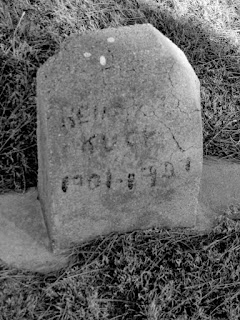Wheeler,
Kansas
Located in the far Northwestern
corner of Kansas, Wheeler is one of those little places that reaches out and
grabs the curious like me to go have a look.
Turning off the highway I drove a short distance to where the town of
Wheeler used to be and I was pleasantly rewarded. Here is a collection of old building and
relics in various states of neglected decay.
There appears to be about 5 homes still lived in and one of them is the
old schoolhouse.
The grain elevator is still in
operation, which probably keeps the town from completely disappearing. There are some classic old elevators standing
and a feed store. Probably built around
1900 to 1910. Just enough aura to transfer the imaginative back to another era
on the plains of hope and settlement.
One of the old store fronts is in
pretty good shape, the other in a state of slow crumbling. Yet in their day they served the townspeople
and others in the area that traded there.
There are vacant lots where other stores stood and homes. There is the main road into town and two little
streets, each a block long. The
schoolhouse sits at the intersection of these last two streets. The school had
a long veranda/porch added to the front and facing east probably makes nice
cool shade during the heat of summer.
I went surfing for some info on the
town. Not much was found except that it
was founded in the Township of Orlando. The
Post Office was there from 1888 to 1961 and other then that????? Nothing was found on Orlando except that it was
35.9 square miles and the town of Wheeler was located in the township.
Townships were usually used for
school boundaries, years ago, for taxation and also for census purposes. Being unincorporated, Wheeler had zero population
but the in 2010, Orlando had 63 souls to be counted for the census.
Like many little towns on the
prairie, Wheeler had its peak population in 1930, before the ‘Dirty 30’s”
began. The dust storms chased many early
settlers out of the country, off to, hopefully, greener pastures. Few people hung on and the ones that remain
today have consolidated much land into their farms and ranches.
One of the other interesting things
I noticed is the style of different states how they refer to their
districts. Many use county, rather then
town and now a township. Wheeler quite
often was referred to as Cheyenne county place in Orlando township.
The railroad tracks are still there
but it looks like the rails have not seen a train is a few years. The highway was realigned and the
discontinuance of rail service has a major impact on the small prairie towns.



















